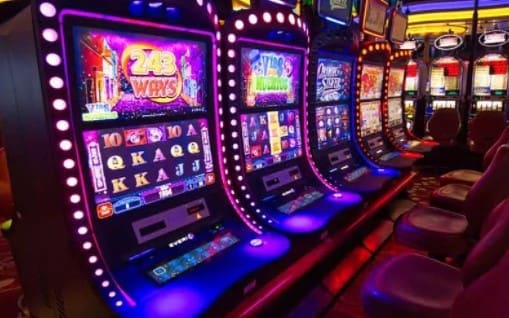People use the Zig Zag Method most often to find loose slots machines. It is not known why the Zig Zag Method was named that. It could be because the player Zigs/Zags through the casino in search of a casino where they can win. In an ideal scenario, they may have been losing for hours. Unfortunately, the Zig Zag Method does not have any scientific support.
The Zig Zag method is a way to find patterns in the slots. For example, imagine that the jackpot slot has bananas. Zig Zag is a method whereby a player searches for the right slot reels and finds them. This is the Zig-Zag theory. Three bananas on the payline are followed by a third. The slot reels should be lined up soon so you can hit a big jackpot.
Today’s slots use what’s known as a random number generator or (RNG). These random number generators, which are internal computers that add up probabilities to determine the symbols to display on each reel of a slot machine’s reels, are called an (RNG). A random number generator determines which symbols will appear on the reels when you place your wager and pull the handle of a slot machine.
This allows us to know that each spin on a slot is its own and independent of any other pulls. Each spin is randomized by the random number generator (RNG). You can see why they call it random.
It is well-known that casino staff will place the “loosest” slot machines closer than the exits and entrances to the casino. When slot machine gamblers go into a casino, they see other players winning at these slots and decide to play. This theory suggests that slot players should always play near the exit and entrance doors of the casino. These may be the most lucrative slots machines.
Another option is for the casino to place loose slots in high-traffic areas. One example of this would be near the cashiers and the toilets and close to an ATM machine and a casino gaming area. You might consider playing a machine that has a lot of casino traffic rather than gambling at the slot machines near the front door.
The theory of hit frequency can be flawed. The hit ratio measures the percentage of slots machine spins that pay off rather than taking your money. This works in reverse: a slot machine may have a higher hit rate, while another machine might have lower hits (wins, payout), but pay more when they do occur.
A slot may be placed near an exit or entrance door or in other high-traffic areas like the bar or ATM. This does not necessarily mean that the machine is more profitable than other machines in the casino. It could be quite the opposite. Casinos don’t exist to give away money. They are constantly innovating new ways to achieve these results.
You shouldn’t expect to find the free slots right in front of the casino. The casino staff knows these stories, so I’m confident. My experience is that the casino places the slots machines with lower payback percentages in areas where players are more likely to play and anchor.
Casinos, those glitzy dens of desire, have strategies aplenty. And oh, how cleverly they’re woven! Think about it. Those brilliant flashes of light, the sharp siren when a jackpot is hit. Even if it’s tiny, doesn’t it sound like someone’s struck gold? And that’s the trick. All around, players hear this. They see. They want their turn. It pumps up the atmosphere. People believe they’re next in line for a windfall.
But let’s delve deeper. You’ve heard of ‘slot temperatures,’ right? Talks of machines being ‘hot’ or ‘cold’? There’s chatter, hints of a pattern to payouts. But here’s the kicker: the RNG, or Random Number Generator, laughs in the face of such myths. Every spin? A fresh start. No ties to the last. Still, the whisper that a ‘due’ machine promises big bucks? Oh, that’s hard to resist!
Now, here’s a sneaky one: LDWs. A player ‘wins’ but has actually snagged less than their bet. Yet, those flashing lights and victorious sounds? They suggest otherwise. A cunning ruse, this illusion of a win pumps up the player’s confidence, urging them to play on.
And the casino layout? A masterstroke! Ever felt lost in there? Winding paths, confusing turns, a labyrinth of temptations. Time stands still, quite literally. Few clocks, scant windows. Day, night, who knows? The more you roam, the longer you play. That’s the trap.
To wrap it up, there’s no foolproof game plan, no secret method. Slot machines are unpredictable beasts, governed by chance alone. Zig Zag might seem tempting, but the real game lies in deciphering the casino’s psychological ploys. So, here’s the golden rule: set a limit, play wisely, and always remember – the house? It has that sneaky edge. Always.

